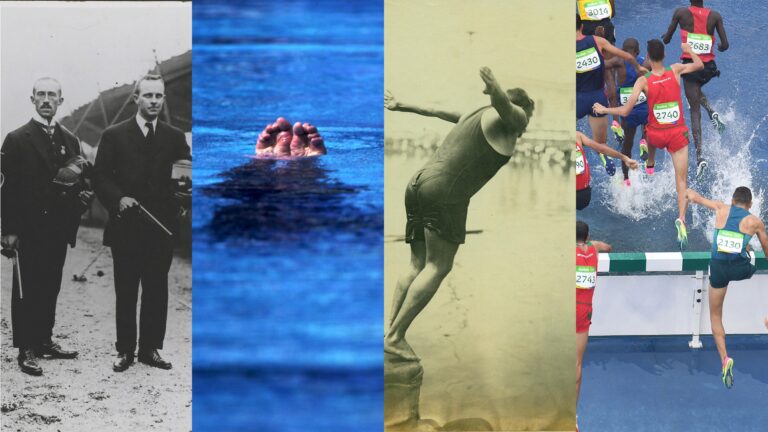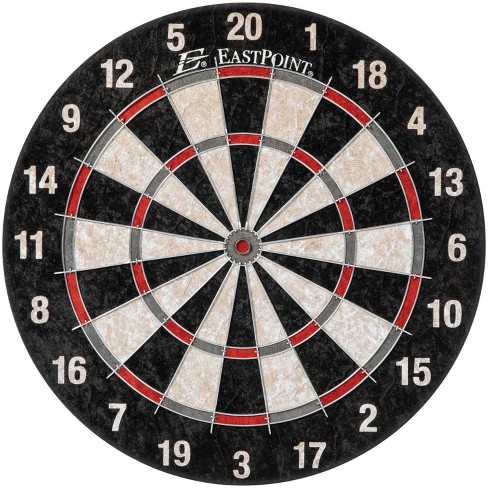Sports that involve archery include target archery, field archery, 3D archery, and traditional archery. Archery requires precision and skill in shooting arrows at a target with a bow.
Archery enthusiasts compete individually or in teams to hit the desired target accurately. It is a sport that requires focus, mental strength, and physical dexterity. Long-distance and short-distance archery are popular variations of the sport. Whether practiced as a recreational activity or taken up competitively, archery provides an exhilarating and challenging experience for participants.
The sport also has a rich history, dating back thousands of years when it was used for hunting and warfare. In recent years, archery has seen a surge in popularity as a recreational activity and as a competitive sport. We will explore the different types of archery sports and provide an overview of each one.
1. Types Of Archery Sports
Archery is a fascinating sport that has captivated people for centuries. Whether you are an experienced archer or just starting out, there are various types of archery sports that you can explore. Each type offers a unique experience and challenges your skills in different ways. In this article, we will delve into three popular archery sports: Target Archery, 3D Archery, and Field Archery.
1.1 Target Archery
Target Archery is perhaps the most well-known and widely practiced form of archery. As the name suggests, this sport involves shooting arrows at stationary targets. These targets are typically circular and divided into multiple scoring zones. The aim is to hit the bullseye, which is at the center of the target, to earn maximum points.
In Target Archery, precision, focus, and consistency are vital. Archers must have a steady hand and master their technique to consistently hit the desired spot on the target. The sport demands immense mental discipline and physical dexterity.
Competitions in Target Archery are held both indoors and outdoors. Indoor competitions are conducted at shorter distances, usually around 18 or 25 meters, while outdoor competitions require archers to shoot from longer distances, ranging from 30 to 90 meters.
1.2 3d Archery
Unlike Target Archery, 3D Archery takes the thrill of the sport to a whole new level. In this exciting form of archery, archers shoot at three-dimensional foam targets that resemble various animals. These targets are strategically placed in natural settings, such as forests or fields, to mimic real hunting scenarios.
3D Archery challenges archers to judge the distance, angle, and elevation of the target accurately. The dynamic and realistic setting of the sport adds an element of adventure and excitement. It requires archers to adapt their shooting techniques and make quick decisions based on the target’s position.
Competitions in 3D Archery often feature different shooting scenarios and target placements. Archers must navigate through the course, taking aim at multiple targets from different distances and positions. The sport not only tests your precision but also your ability to adjust and make split-second decisions.
1.3 Field Archery
Field Archery is the perfect fusion of archery and natural surroundings. Unlike Target Archery, which is set on a flat field, Field Archery is conducted in diverse terrains, including forests, hillsides, and open fields. The courses are designed to simulate hunting conditions and typically consist of multiple targets placed at varying distances and angles.
This challenging sport demands archers to showcase their skills in different shooting positions, such as uphill, downhill, and across valleys. The ever-changing terrain and unpredictable weather conditions make Field Archery a thrilling and unpredictable adventure.
Competitions in Field Archery are usually divided into different rounds, with archers moving from target to target. The goal is to hit the targets accurately while maneuvering through the natural obstacles. Archers must possess exceptional judgment, adaptability, and accuracy to excel in this sport.

Credit: www.facebook.com
2. Equipment And Gear
When it comes to archery, having the right equipment and gear is crucial for success and safety. From bows to arrows to protective gear, each element plays a vital role in ensuring a thrilling and enjoyable archery experience. Let’s take a closer look at the key components of archery equipment:
2.1 Bows
The bow is the heart and soul of archery. It is the primary tool that an archer uses to shoot arrows with precision and accuracy. Archery bows come in a variety of styles, each with its own unique characteristics.
There are mainly three types of bows:
- Recurve bows: These bows are recognized by their curved limbs, which enable them to store and release more energy compared to other types. Recurve bows are ideal for competitive archery and Olympic events.
- Compound bows: Known for their mechanical advantage, compound bows utilize a system of cams and pulleys to make drawing the bow easier. This makes compound bows a popular choice among bowhunters.
- Traditional bows: Often referred to as longbows or self bows, traditional bows harken back to the roots of archery. They are simplistic in design, relying solely on the archer’s skill and technique.
Regardless of the type, a bow must be properly sized and fitted to suit the archer’s preference and shooting style. It is recommended to seek guidance from a professional to find the perfect bow for your needs.
2.2 Arrows
Next on the list of archery equipment are arrows. Arrows are carefully crafted projectiles that deliver power and accuracy, carrying the archer’s aim to the target. They consist of several important parts:
Let’s explore the components of an arrow:
- Shaft: The main body of an arrow, typically made of lightweight materials such as carbon or aluminum.
- Fletching: Feathers or plastic vanes attached to the rear end of the arrow, providing stability and steering during flight.
- Nock: A small plastic or metal component at the rear end of the arrow that engages with the bowstring.
- Point: The front end of the arrow, which can be equipped with different types of arrowheads depending on the intended use.
Choosing the right arrows involves considering factors such as the archer’s draw length and draw weight, as well as the type of bow being used. A professional or experienced archer can guide you in selecting arrows that complement your archery setup.
2.3 Protective Gear
Archery, like any sport, requires proper protective gear to ensure a safe and enjoyable experience. While archery is generally considered a safe activity, accidents can happen. Here are some essential protective items:
| Protective Gear | Description |
|---|---|
| Archer’s Armguard | A leather or synthetic guard worn on the forearm to protect against string slap or bowstring contact. |
| Finger Tab | A protective tab worn on the fingers to shield them from the repetitive motion and pressure of drawing and releasing the bowstring. |
| Archery Glove | An alternative to a finger tab, an archery glove provides finger protection and a smooth release. |
| Chest Guard | Designed to protect the chest and clothing from the bowstring, especially during the release. |
| Armguard | Similar to an archer’s armguard, an armguard provides protection for the upper arm. |
Wearing appropriate protective gear helps prevent injuries and ensures that archery remains a safe and enjoyable sport for all participants. Remember, safety should always be a top priority!
3. Training And Technique
When it comes to sports that involve archery, training and technique play a crucial role in achieving accuracy and precision. The proper training not only enhances physical strength but also hones mental focus and concentration. Developing the right technique ensures consistent shots and improves overall performance. In this section, we will explore three essential aspects of training and technique: choosing the right bow, developing proper form, and mastering aiming and shooting techniques.
3.1 Choosing The Right Bow
Choosing the right bow is vital for any aspiring archer. The type of bow you select can greatly affect your shooting experience and accuracy. There are various types of bows available, such as recurve bows, compound bows, and traditional longbows. Each type has its own unique characteristics and advantages.
A recurve bow is a popular choice for beginners because of its simplicity and versatility. It features curved limbs that store and release energy efficiently, resulting in faster arrow speeds. On the other hand, compound bows are favored by experienced archers due to their advanced technology, which offers greater accuracy and reduced effort in holding the draw. Traditional longbows offer a nostalgic appeal and simplicity, which some archers find appealing.
| Bow Type | Advantages |
|---|---|
| Recurve Bow | Simple, versatile, and fast arrow speeds |
| Compound Bow | Advanced technology, enhanced accuracy, and reduced effort |
| Traditional Longbow | Nostalgic appeal and simplicity |
Choosing the right bow depends on your comfort, shooting style, and goals. It is important to test out different bows and seek expert advice before making a final decision. Remember, the right bow can greatly impact your overall performance.
3.2 Developing Proper Form
Developing proper form is integral to archery. It ensures consistency in shots and minimizes the margins of error. A strong foundation of proper form sets the stage for advanced techniques and improved accuracy.
The first step in developing proper form is mastering the basics. This includes establishing a stable stance, maintaining a relaxed yet firm grip on the bow, and positioning your body in alignment with the target. By maintaining a consistent anchor point and drawing the bowstring back consistently, you can improve shot consistency and accuracy.
3.3 Aiming And Shooting Techniques
Aiming and shooting techniques are the final pieces of the puzzle in archery. There are a variety of aiming methods used, such as instinctive aiming, gap shooting, and sight shooting. Each method relies on a combination of muscle memory, focus, and visual alignment to hit the target accurately.
In instinctive aiming, archers rely on their subconscious mind to gauge the correct aiming point. Gap shooting involves visually aligning the target with the arrow shaft, taking into account the distance between the target and the bow. Sight shooting employs the use of a sight or optical device to assist in aiming with precision.
Regardless of the aiming method chosen, a smooth release and follow-through are essential for accurate shots. Proper breathing techniques, mental focus, and consistent anchor points contribute to a successful release and follow-through.
Mastering aiming and shooting techniques requires practice and patience. Regular training sessions, proper guidance, and a positive mindset are key to continuous improvement and achieving your archery goals.

Credit: allevents.in
4. Competitive Archery
Welcome to the exciting world of competitive archery! This subcategory of archery brings together skilled athletes from around the globe to showcase their precision, focus, and athleticism. In this section, we will explore three significant aspects of competitive archery: Olympic Archery, Paralympic Archery, and the World Archery Championships. Let’s dive in!
4.1 Olympic Archery
Olympic Archery is a highly prestigious event that takes place during the Summer Olympic Games. Since its introduction in 1900, archery has captured the attention of spectators with its thrilling displays of accuracy and skill. Athletes from various nations compete using recurve bows, the traditional type of bow seen in most archery competitions. Olympic Archery tests both individual and team prowess, making it a captivating event to watch.
4.2 Paralympic Archery
Paralympic Archery provides a platform for athletes with physical disabilities to participate in archery competitions. This discipline showcases the extraordinary determination and resilience of athletes who have overcome significant challenges. Archers with differing abilities, such as physical impairments, visual impairments, or a combination of both, compete in various divisions according to their level of impairment. Paralympic Archery embodies the true spirit of sportsmanship and inclusivity.
4.3 World Archery Championships
The World Archery Championships is a highly anticipated international tournament that brings together archers from all over the world. Held biennially, this event attracts top archers who compete in various categories and bow types, including recurve, compound, and barebow. The championships consist of team and individual events, highlighting the diversity and talent within the archery community. Year after year, the World Archery Championships captivate audiences with its breathtaking displays of precision and nerve.

Credit: www.walmart.com
Frequently Asked Questions For Sports That Involve Archery
What Are Some Sports That Involve Archery?
Archery is mainly practiced in sports like target archery, field archery, 3D archery, and para-archery. These sports require precision, concentration, and physical stamina, making archery one of the most fascinating sports to watch and participate in.
How Do You Aim In Archery?
To aim in archery, you need to align the bow sight or string with your desired target, allowing your dominant eye to guide your focus. Keep your body in a steady position, maintain a relaxed grip, and release the bowstring smoothly, resulting in an accurate shot.
Is Archery A Safe Sport?
Yes, archery is generally considered a safe sport when practiced with proper guidelines and safety measures. Equipment inspections, range rules, and proper training significantly reduce the risk of accidents. However, it is always essential to follow safety protocols and receive professional guidance to ensure safe archery practices.
Can Anyone Participate In Archery Regardless Of Age?
Absolutely! Archery is a versatile sport that can be enjoyed by people of all ages. Many archery clubs and organizations organize programs and events for juniors, adults, and seniors alike. It is never too early or too late to start honing your archery skills and experiencing the joy of this ancient sport.
Conclusion
Archery is a captivating sport that has captured the hearts of many enthusiasts worldwide. Its presence can be seen in various disciplines like field archery, target archery, and 3D archery. Whether you are aiming for precision or experiencing the thrill of simulated hunting scenarios, archery offers a unique blend of physical and mental challenges.
So, grab your bow and arrow, and dive into the fascinating world of archery, where focus, skill, and precision reign supreme. Join the archery community, unleash your inner Robin Hood, and let the arrows fly!





